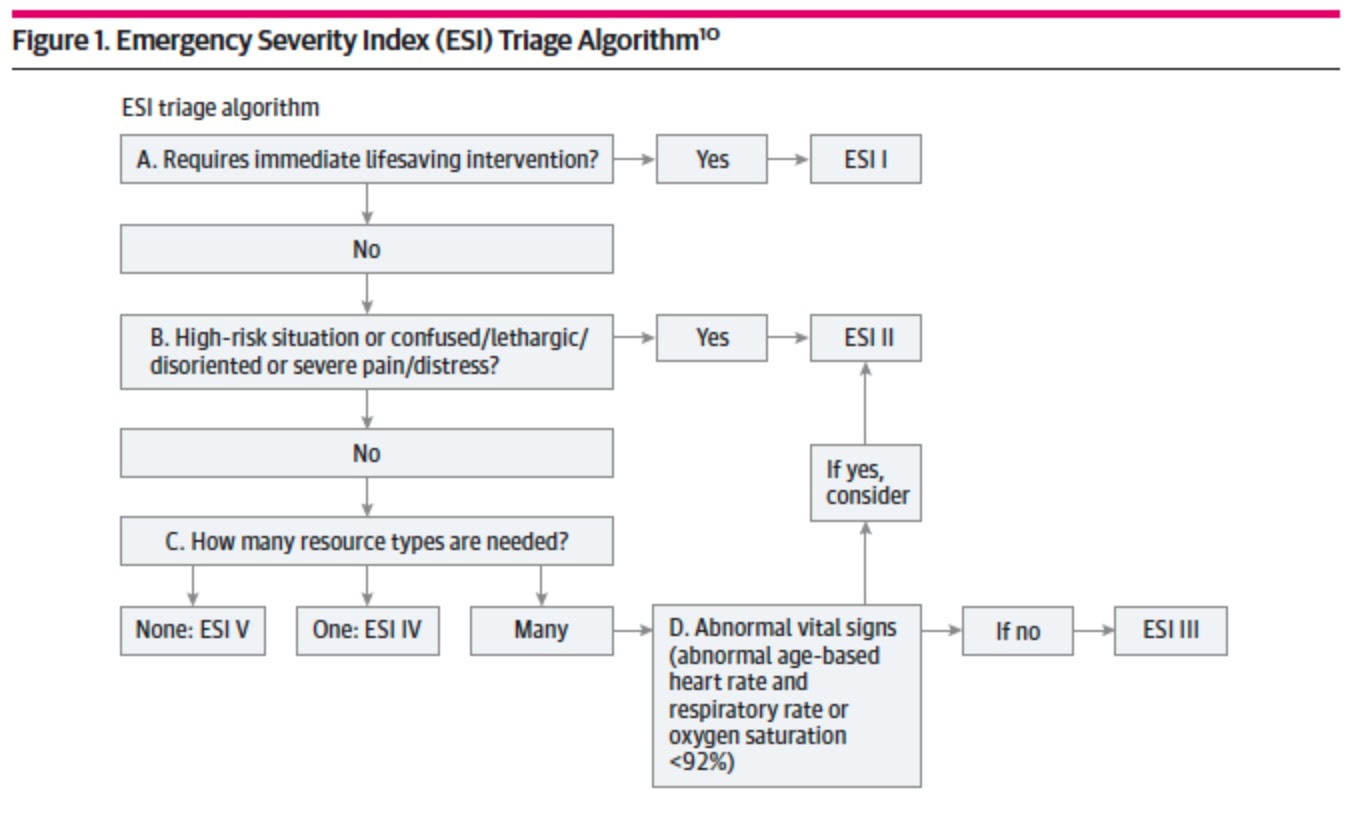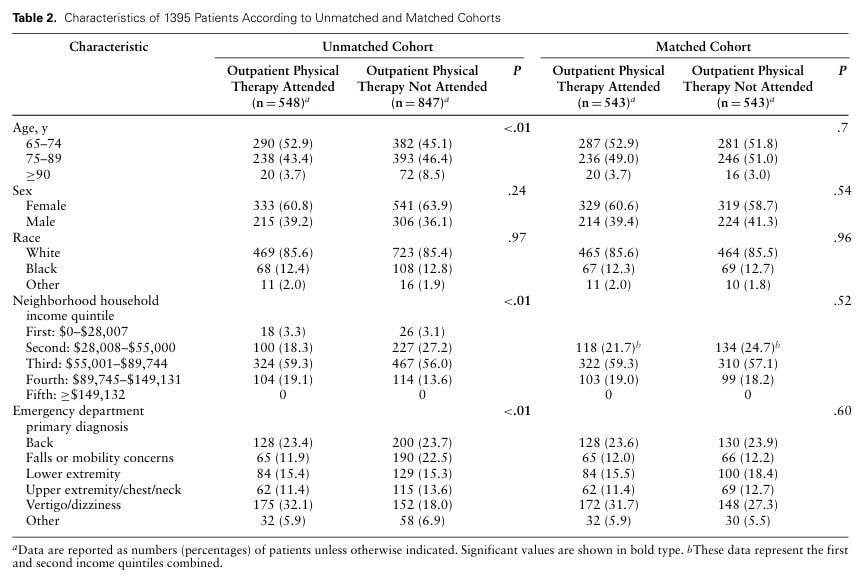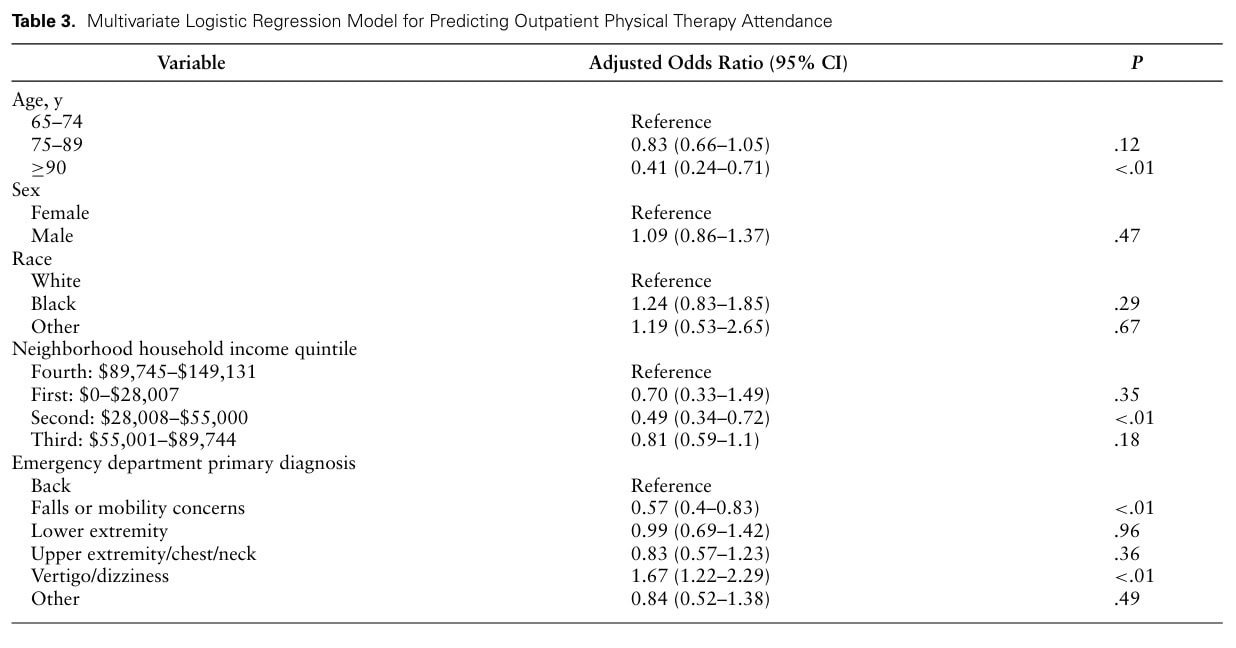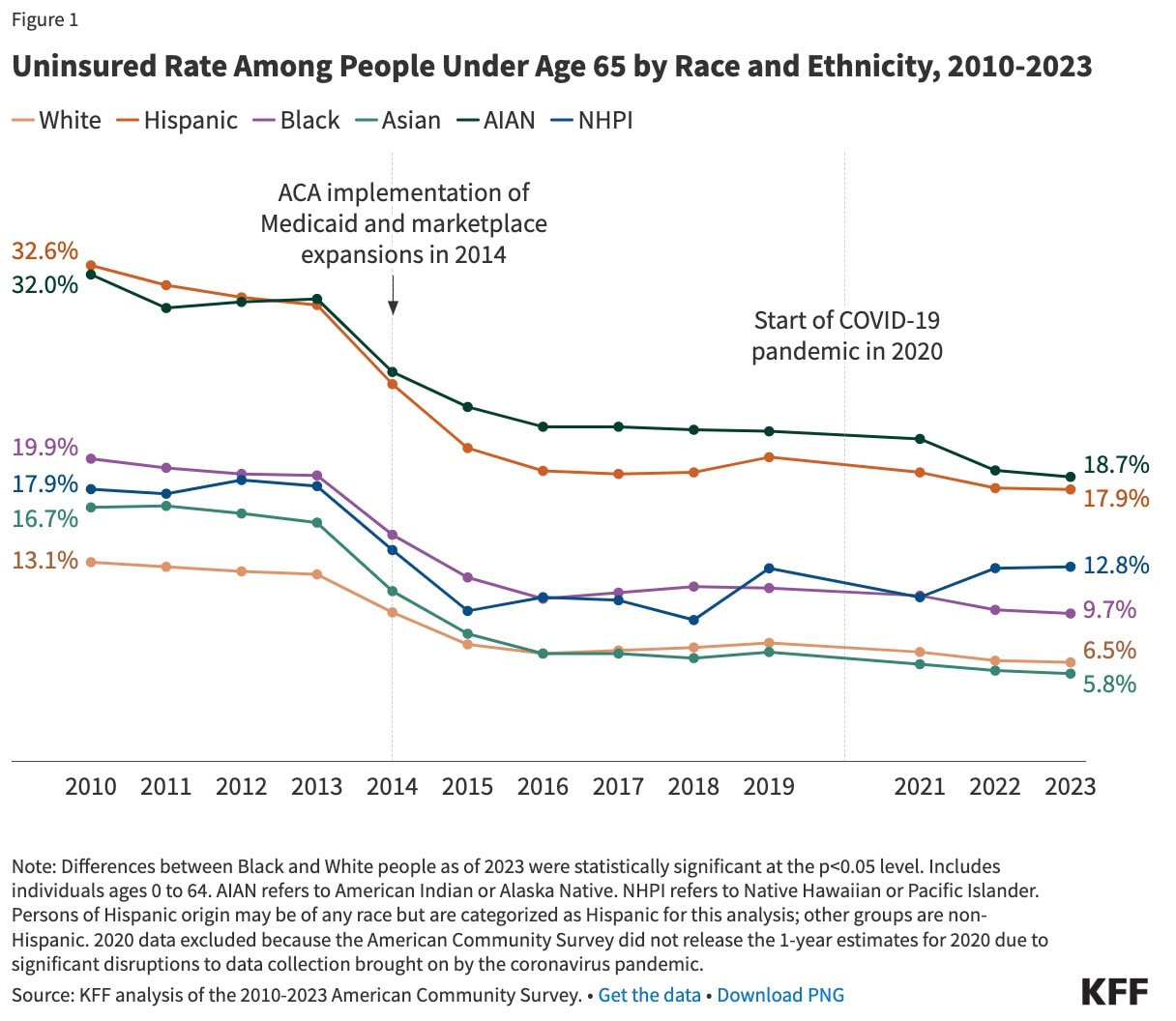Physiotherapy After Emergency Department Discharge

Introduction
A large proportion of people attending the emergency department are discharged back home with a referral for outpatient physiotherapy. Understanding how post-emergency department discharge care impacts older adults is crucial, especially considering their higher risk of functional decline and return visits. While physiotherapy’s role in improving outcomes for older adults in various settings is recognized, there’s limited research specifically examining its impact on those discharged directly from the emergency department. This study was designed to address that gap.
Methods
This retrospective cohort study was conducted to investigate the patient characteristics of patients referred to physiotherapy after emergency department discharge. Attendance at the referred physiotherapy was analysed and compared for 30-day revisits to the emergency department.
Older individuals aged 65 years and older who received a referral for outpatient physiotherapy upon discharge from the emergency department were included. The outcome of interest was the attendance of these patients at the physiotherapy and 30-day revisits to the emergency department. The characteristics of attenders and non-attenders were compared.
Predictors of physiotherapy attendance were derived from previous evidence and clinically acquired knowledge of the authors. The severity of the health issue for which patients presented to the emergency department was recorded (Emergency Severity Index), along with the comorbidities (using the Charlson Comorbidity Index).
- The Emergency Severity Index is used for triage purposes and groups the patient in one of five categories: level 1 is the most urgent, with level 5 being the least urgent. Level 3 or lower indicates urgent needs.
- The Charlson Comorbidity Index assigns scores to 22 conditions, then sums them to get a severity score categorized into 3 grades.

Other collected variables included the median neighborhood household income, which was grouped into five quintiles (from least to most income) as a parameter of socioeconomic status, along with the patient’s demographics. The primary diagnoses were listed below, with the top 5 displayed in each category.

People who did attend physiotherapy after emergency department discharge versus those who did not were matched with each other. A multivariate regression analysis was run to determine the odds of attending outpatient physiotherapy after emergency department discharge and the odds of a re-visit to the emergency department in the 30 days following discharge.
Results
A large sample of 1395 older adults was analysed, of which 1086 could be matched. There was no difference between those who attended or did not attend physiotherapy after emergency department discharge regarding the severity of their emergency, nor for the severity of their comorbidities.
- Comorbidity index: 3.91 for non-attenders versus 3.61
- Emergency severity: 3.01 for non-attenders versus 3.05

Almost one in four went to the emergency department for dizziness/vertigo complaints and for back pain. About one in five fell or went to the emergency department for impaired mobility issues. Fifteen percent had lower extremity problems and twelve percent had upper extremity problems for which they consulted the emergency department. Six percent of the patients had an injury or health issue that was categorized as “other”, including, for example, a COVID-19 infection or a urinary tract infection.
More than sixty percent of older adults who were referred to physiotherapy after emergency department discharge did not attend a physiotherapy appointment within 30 days of discharge. Only 548 (39.3%) did see a physiotherapist after it was recommended by the emergency department.
Those who did not attend physiotherapy after emergency department discharge were mostly diagnosed with back pain or an injury to their backs (23.7%) and falls or mobility concerns (22.5%).
People who did attend physiotherapy after emergency department discharge did that most often for vertigo/balance problems (53%) and least for falls and mobility concerns (25%).
The multivariate regression analysis revealed that predictors of actually attending outpatient physiotherapy after emergency department discharge were age, neighborhood income, and primary diagnosis.
- Those of 90 years and older were 59% less likely to attend physiotherapy care in the next month after being discharged compared to those aged between 65 and 74 years.
- People falling in the second quintile of their neighbourhood income were 51% less likely to attend physiotherapy in the next month after emergency department discharge
- Compared to people with back pain (which served as the reference), people who fell were 43% less likely to attend physiotherapy, while those who suffered from vertigo and dizziness were 67% more likely to attend physiotherapy after emergency department discharge.

17.6% Revisited the emergency department within 30 days, which accounts for nearly 1 in 5 of the studied sample. Remarkably, those who actually went to their physiotherapy visit after they got discharged the first time from the emergency department had an 11.8% revisit rate, versus 20% for those who did not attend physiotherapy after emergency department discharge. For someone who did not attend their physiotherapy appointment, the odds of returning to the emergency department within 30 days were 88 times higher.

Income status influenced the 30-day revisit rate as well. Those in the first and second quintiles showed 66% higher odds of revisiting the emergency department within 30 days of initial discharge.

Questions and thoughts
The odds of returning to the emergency department within 30 days of discharge were 88 times higher, meaning physiotherapy has an important role in these cases. We must be aware that these numbers do not tell us the whole story. Did some patients return because of severely worsening symptoms, or because they are very worried and do not understand what is going on? Possibly, they had a completely different pathology going on at that moment of returning to the emergency department.
Nevertheless, a revisit rate of 20% versus 11.8% is telling us something important. Especially those with low incomes are more likely to return to the emergency department as well. This can be because low income status is often linked to poor health outcomes and health literacy. These people may need a lot of information and education to understand what is going on in their bodies and why they are discharged from the emergency department with a physiotherapy visit. We as physiotherapists can be a crucial contributor to increasing body and health awareness in this population.
Older adults who went to the emergency department after a fall were less likely to attend physiotherapy, compared to older adults with back pain (reference category). Since older people are more likely to fall and, especially in case osteoporosis is present, are vulnerable, this is important to consider. These people are those who should ideally be seen by a physiotherapist to work on balance issues, mobility restrictions, and strength.
Talk nerdy to me
An important limitation of this study is that the data was collected from only one healthcare institution, and that people who received care outside of the healthcare system were not captured by this database. It is possible that these people were seen in private care, since the United States healthcare system is a mixed system with both public and private components.
The study predominantly included white people from Midwest America, and this limits generalizability to more mixed populations. By including 5 different income classes, the study did, however, include people across all socioeconomic profiles. Yet, large differences exist in insurance rates and healthcare access

Take-home messages
This study shows that physiotherapy can play a crucial role in preventing older adults from returning to the emergency department after a visit. However, we as physiotherapists need to be aware of the factors that can prevent patients from accessing the care they need. People affected by vertigo were more likely to attend physiotherapy after emergency department discharge, compared to those who fell, and may be a much more vulnerable population. Only 39.3% of older adults with a referral actually attended outpatient physiotherapy. Those who did attend had a significantly lower chance (88% lower odds) of returning to the emergency department within 30 days.
Reference
How Nutrition Can Be a Crucial Factor for Central Sensitisation - Video Lecture
Watch this FREE video lecture on Nutrition & Central Sensitisation by Europe’s #1 chronic pain researcher Jo Nijs. Which food patients should avoid will probably surprise you!



